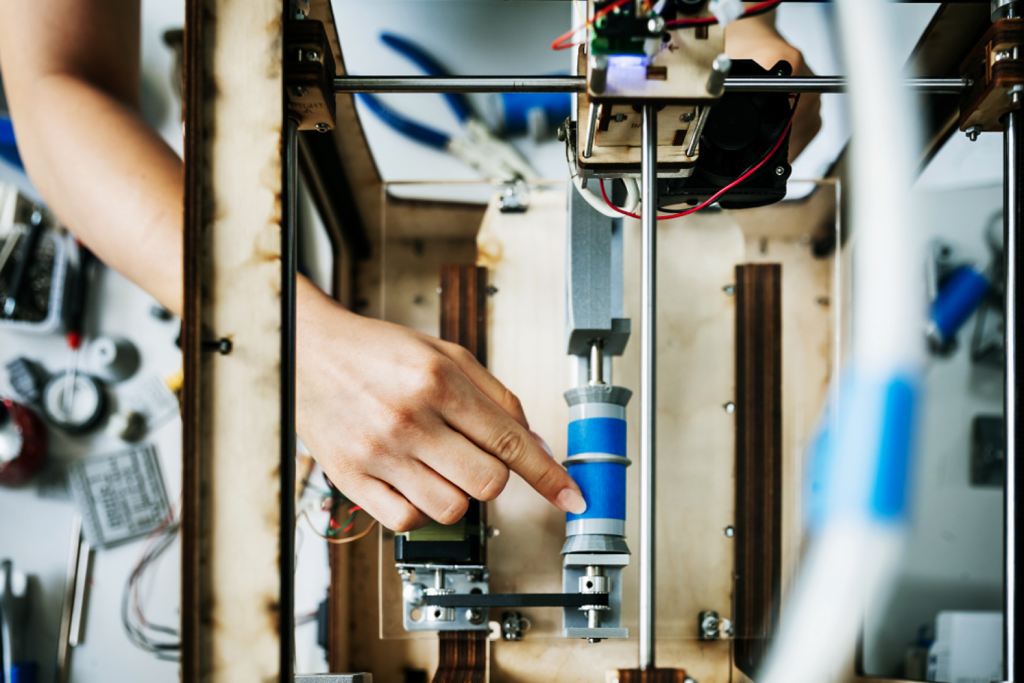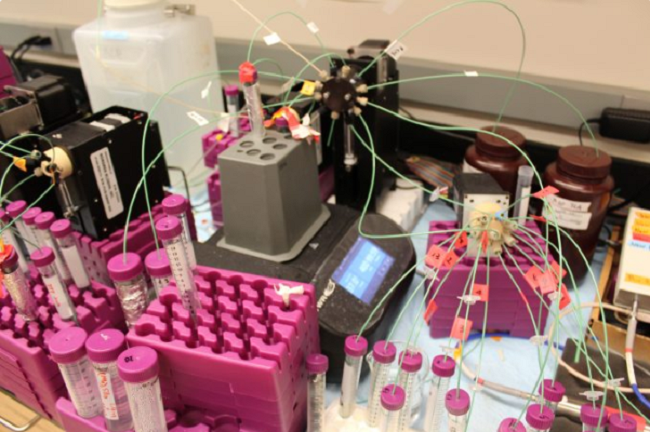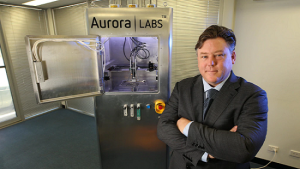RIZE debuts the 2XC 3D printer – technical specifications and pricing
UL publishes independent study on 3D printed polymer properties
UL and ASTM International sign agreement to publish AM facility safety standard
ASTM and UL to Publish ISO-ASTM Standard for Additive Manufacturing
Nonprofit standards development organization ASTM International, which develops and publishes technical standards for a range of industries, materials, products, services, and systems around the globe, has signed a memorandum of understanding (MoU) with Underwriters Laboratories (UL), another nonprofit which works to advance its mission of public safety through discovery and application of scientific knowledge. The agreement will set up a framework for a cooperation between the two to create an international, dual-logo ASTM and International Standardization Organization (ISO) standard.
“We are announcing a collaboration agreement with ASTM International that will result in an ISO-ASTM standard for additive manufacturing facility safety management,” Patrick Wilmot, Communications Manager for UL Standards, told 3DPrint.com. “This is an exciting partnership for our organizations and we believe it will be of great use to the AM industry.”
While ASTM signed an MoU with German testing and certification organization TÜV°SÜD at formnext 2019, and created the Additive Manufacturing Standards Development Structure with ISO back in 2016, this new MoU is the first international collaboration agreement of its kind with fellow standards development organization UL.
“This partnership brings together both organizations’ expertise and shared desire to drive global safety. It leverages ASTM’s technical committee and relationship with ISO with our document and research to drive impact and positively influence the international standards landscape,” said UL Standards Vice President Global Standards Phil Piqueira.
The terms of this new MoU state that ASTM will act as the standards developing organization (SDO) for the agreement, which includes responsibilities such as managing all activities and administrative support. In addition, it will convene the organization’s F42 additive manufacturing technical committee, first formed over a decade ago, in order to review and advance the UL document, the basis of which is its 3400 Outline of Investigation for Additive Manufacturing Facility Safety Management. Once the document, developed with UL research, is complete, ASTM will publish the standard.
 ASTM has an existing agreement with ISO to publish its standards documents as ASTM-ISO standards, which means that UL Standards will transfer its copyright of the material in the UL 3400 document over to ASTM so that it can officially be published as an ISO-ASTM standard. The complete, published standard will also be attributed to UL Standards, due to its content and technical expertise.
ASTM has an existing agreement with ISO to publish its standards documents as ASTM-ISO standards, which means that UL Standards will transfer its copyright of the material in the UL 3400 document over to ASTM so that it can officially be published as an ISO-ASTM standard. The complete, published standard will also be attributed to UL Standards, due to its content and technical expertise.
“The collaborative nature of global standardization creates many opportunities for partnership with other SDOs. We appreciate these opportunities to share knowledge with partners like Underwriters Laboratories to help advance public safety in this fast-evolving field,” stated Brian Meincke, ASTM International’s Vice President of Finance, Business Development and Innovation.
What do you think about this news? Let us know! Discuss this story and other 3D printing topics at 3DPrintBoard.com or share your thoughts in the Facebook comments below.
The post ASTM and UL to Publish ISO-ASTM Standard for Additive Manufacturing appeared first on 3DPrint.com | The Voice of 3D Printing / Additive Manufacturing.
3D Printing Industry Review of the year: January 2019
ROBOZE introduces amorphous SABIC EXTEM filament for ARGO 3D printer
Additive Manufacturing Users Group announces new board
UL and Georgia Tech Continue Research Into Impact of 3D Printing Emissions on Indoor Air Quality
In 2015, non-profit safety science company Underwriters Laboratories (UL) and its Chemical Research Initiative, the Georgia Institute of Technology (Georgia Tech), and Emory University Rollins School of Public Health, worked together to conduct a two-year study on desktop 3D printer emissions. Over the course of the study, Dr. Marilyn Black, the Vice President and Senior Technical Advisor at UL Chemical Safety, and the rest of the research team found that desktop 3D printer emissions can actually pose a potential health threat.
This month, UL Chemical Safety, a science-directed research group that is part of UL, and Georgia Tech released their previous findings, and announced a new body of research that will look into the impact of 3D printing on indoor air quality.
Dr. Black stated, “Following our series of studies – the most extensive to date on 3D printer emissions – we are recommending additional investments in scientific research and product advancement to minimize emissions, and increased user awareness so safety measures can be taken.”
The previous study determined that while many desktop 3D printers are in operation, they generate ul
Additionally, the team’s research showed that over 200 different volatile organic compounds (VOCs), many of which are either suspected or known carcinogens and irritants, are also released into the air while 3D printers are operating.
UL has now begun a dedicated campaign to raise awareness of the potential air quality risks of 3D printing, and to educate users on how to minimize their exposure to VOCs and UFPs. Dr. Black is advocating for a complete risk assessment, which could factor in considerations in personal sensitivity and dosage, in order to more “fully understand the impact of the chemical and particle emissions on health.”
“Studies have shown that fused filament fabrication (FFF) 3D printers designed for general public use emit high levels of ultrafine and fine particles. Preliminary tests with in vivo, in vitro and acellular methods for particles generated by a limited number of filaments showed adverse responses,” explained Dr. Rodney Weber, Georgia Tech’s primary investigator of the research.
 There are plenty of different factors, from filament type and color to nozzle temperature and even the brand of 3D printer, that can affect the level of emissions, and while there are definitely products out there that purport to make 3D printing safer, there isn’t a lot of available marketplace information just yet.
There are plenty of different factors, from filament type and color to nozzle temperature and even the brand of 3D printer, that can affect the level of emissions, and while there are definitely products out there that purport to make 3D printing safer, there isn’t a lot of available marketplace information just yet.
These findings from Georgia Tech and UL come as 3D printing continues to gain momentum in commercial, consumer, educational, medical, and military applications, and if the issue of harmful emission levels is not addressed, there could be a potential public health risk.
3D printers are being used more and more often in school settings, and as children are the most sensitive population to the impact of contaminants such as VOCs, we need to make sure we’re protecting them by reducing their exposure to emissions.
We can lower the potential risks by following some simple rules:
- Operating 3D printers in well-ventilated areas
- Standing away from operating 3D printers
- Setting the nozzle temperature at the lower end of the suggested range
- Using 3D printers and filaments that have been tested and verified to have low emissions
Researchers from UL and Georgia Tech recently published two scientific research papers, titled “Investigating particle emissions and aerosol dynamics from a consumer fused deposition modeling 3D printer with a lognormal moment aerosol model” and “Characterization of particle emissions from consumer fused deposition modeling 3D printers,” in the journal Aerosol Science and Technology. Additionally, two more papers regarding the “plethora of chemical emissions” and 3D printer particle toxicity are currently under review.
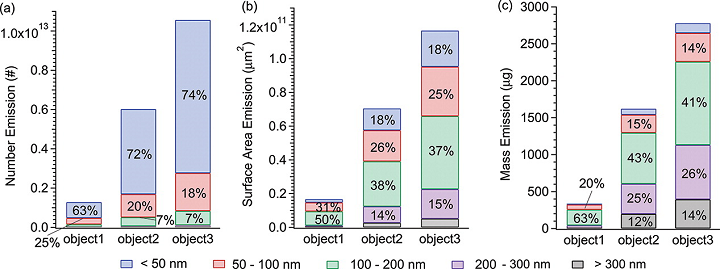
Particle number (a), surface area (b) and mass (c) emissions for ABS filament d green color on printer A for 3 objects taking about 1 h, 4 h, and 7 h to print. Each bar indicates the emission (TP) from one print object; colors indicate different particle size ranges. Values on the colored bars are the ratios of emissions from such particle size range over total emissions. [Image: Georgia Tech & UL]
Based on the current research, and further collaboration with third-party stakeholders, a new UL/American National Standards Institute (ANSI) consensus standard has been developed for testing and evaluating 3D printer emissions. UL/ANSI 2904 is currently available for review and comment, and the final standard should be ready next month.
What do you think about this? Discuss this research and other 3D printing topics at 3DPrintBoard.com or share your thoughts in the Facebook comments below.
3D Printing News Briefs: October 27, 2018
We’re starting off with some news about products being displayed at the upcoming formnext in today’s 3D Printing News Briefs, and then moving on to business and research news. Clariant and Xaar have both revealed what they will be showcasing at formnext 2018 in Munich next month. Aurora Metals has announced a new partnership, while Lockheed Martin is the first organization to have an additive manufacturing facility certified to UL 3400 for AM hazards. Finally, America Makes has announced its next Directed Project Opportunity.
Clariant Presenting Industrial 3D Printing Materials at formnext
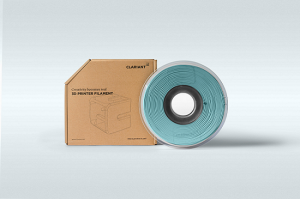 This year’s formnext is coming up in just a few short weeks, and companies all over the world are announcing what products they’ll be bringing with them to the show. Specialty chemicals company Clariant will be showcasing its 3D printing materials and solutions for intelligent industrial manufacturing at the event this year, including featured materials like polyamides for small lot production, customer-tailored colorant and additive guidance, and high impact strength materials that offer electrostatic discharge protection for manufacturing aids.
This year’s formnext is coming up in just a few short weeks, and companies all over the world are announcing what products they’ll be bringing with them to the show. Specialty chemicals company Clariant will be showcasing its 3D printing materials and solutions for intelligent industrial manufacturing at the event this year, including featured materials like polyamides for small lot production, customer-tailored colorant and additive guidance, and high impact strength materials that offer electrostatic discharge protection for manufacturing aids.
“OEMs require that 3D printing materials perform at the same level as their injection molded counterparts. This was the significant factor in achieving the acceptance to allow product production with our materials and will continue to be,” said Joanna Marguier, Senior Manager of R&D for Clariant’s 3D printing business. “From the inception of our 3D printing business, Clariant has focused on providing superior 3D printing materials that achieve the customer’s requirements for their specific application. We work closely with them to tailor solutions to meet their needs.”
Marguier will also be outlining the company’s success with flame retardants in a technical presentation at formnext on November 15. formnext runs November 13-16, and you can visit the Clariant team at booth 3.1-H40 in Hall 3.1 at the Messe Frankfurt.
Xaar Showcasing Latest Inkjet Printhead Technology at formnext
 Speaking of formnext, digital inkjet technology Xaar will be exhibiting the latest in inkjet printhead technology at the show. Visitors can learn how the company’s award-winning High Laydown (HL) technology, which allows for the jetting of 3D fluids with high viscosity (at least 55cP), coupled with its partnerships with other industry leaders, can help its customers get ahead in volume 3D printing. Xaar will also be displaying samples that were produced with high viscosity photoresins from BASF 3D Printing Solutions
Speaking of formnext, digital inkjet technology Xaar will be exhibiting the latest in inkjet printhead technology at the show. Visitors can learn how the company’s award-winning High Laydown (HL) technology, which allows for the jetting of 3D fluids with high viscosity (at least 55cP), coupled with its partnerships with other industry leaders, can help its customers get ahead in volume 3D printing. Xaar will also be displaying samples that were produced with high viscosity photoresins from BASF 3D Printing Solutions
“The formnext show is a major global event for the 3D Printing sector and we are excited to be exhibiting our complete printhead portfolio and HL Technology for volume 3D production. We pride ourselves on providing ongoing support to all our customers’ projects – from early fluid evaluation through to commercialisation. That’s why we are welcoming manufacturers and integrators to visit the Xaar stand and discover how our printhead technology can help them introduce new printers quickly and cost-effectively, thereby delivering a true competitive edge and real value to 3D end- users,” said Simon Kirk, Senior Product Manager at Xaar.
You can visit Xaar at formnext at booth A78 in Hall 3.1
Aurora Labs Partnering with Fortescue Metals Group
Australian metal 3D printing Aurora Labs has signed a preliminary non-binding term sheet agreement with fellow Australian company Fortescue Metals Group. The agreement comprises an Industry Partner Program, and Aurora Labs will work with Fortescue to demonstrate the potential for application of its Rapid Manufacturing Technology (RMT) in the mining industry. The terms of the agreement are for an initial 12 months and may be extended by mutual agreement, and Aurora believes that the venture could even progress further to developing technology together in order to lower operation and production costs in the mining industry.
“We’re very excited to sign a preliminary agreement with Fortescue, and pursue the opportunity to apply Aurora’s Rapid Manufacturing Technology to the mining sector,” said David Budge, Aurora Labs’ Managing Director. “Fortescue are an ideal industry partner for us and they are at the forefront of technological advancements in the mining sector.”
Lockheed Martin Certified UL 3400
![]() Top global safety science company UL has announced that it has certified the first additive manufacturing facility to UL 3400, a set of safety guidelines published last year that address the hazards associated with AM facilities. UL issued this prestigious certification to Lockheed Martin, and its 6,775-square-foot Additive Design and Manufacturing Center in Sunnyvale, California. UL 3400, also called the Outline of Investigation for Additive Manufacturing Facility Safety Management, considers the three layers of safety: material, equipment, and the facility itself, and references applicable standards from OSHA, ASTM International, the National Fire Protection Association, and others. UL and its 3400 guideline cover the potential hazards and risk mitigation measures that are required for these facilities to function safely.
Top global safety science company UL has announced that it has certified the first additive manufacturing facility to UL 3400, a set of safety guidelines published last year that address the hazards associated with AM facilities. UL issued this prestigious certification to Lockheed Martin, and its 6,775-square-foot Additive Design and Manufacturing Center in Sunnyvale, California. UL 3400, also called the Outline of Investigation for Additive Manufacturing Facility Safety Management, considers the three layers of safety: material, equipment, and the facility itself, and references applicable standards from OSHA, ASTM International, the National Fire Protection Association, and others. UL and its 3400 guideline cover the potential hazards and risk mitigation measures that are required for these facilities to function safely.
“Employers, employees, local regulators as well as insurance companies who have to underwrite additive manufacturing facilities, were not fully aware of the inherent material and technology risks. Safety is designed rather than built. Not a single standard or statutory guideline was available that specifically focused on additive manufacturing. Other standards and guidelines were developed for conventional manufacturing processes,” explained Balu V. Nair, UL’s Additive Manufacturing Lead Development Engineer and an important player in developing UL 3400. “We decided to address this industry need by developing a set of guidelines with exclusive focus on additive manufacturing.”
America Makes Announces Next Directed Project Opportunity
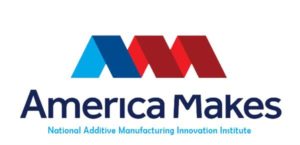 This week, America Makes announced its next Directed Project Opportunity, available for its members for AM applied (R&D) projects for Advanced Tools for Rapid Qualification (ATRQ). The goal is to promote and accelerate the development and deployment of cost effective, energy-efficient 3D printing technologies in order to meet defense and/or commercial needs. Approximately $3.9 million should be made available to fund multiple awards, with at least $1.95 million in matching funds from the winning project teams. The technical requirements of the ATRQ Directed Project Opportunity relate to the America Makes Technology Roadmap, as well as the Integrated DoD AM Roadmap.
This week, America Makes announced its next Directed Project Opportunity, available for its members for AM applied (R&D) projects for Advanced Tools for Rapid Qualification (ATRQ). The goal is to promote and accelerate the development and deployment of cost effective, energy-efficient 3D printing technologies in order to meet defense and/or commercial needs. Approximately $3.9 million should be made available to fund multiple awards, with at least $1.95 million in matching funds from the winning project teams. The technical requirements of the ATRQ Directed Project Opportunity relate to the America Makes Technology Roadmap, as well as the Integrated DoD AM Roadmap.
“For our partners at the DoD, the anticipated outcomes of the America Makes ATRQ Directed Project Opportunity are of the utmost importance. The DoD’s need for rapid qualification and certification of AM processes and materials is great,” said Rob Gorham, the Executive Director of America Makes. “These projects will be instrumental in resolving the current deterrents that are hindering the wider adoption and deployment of AM technologies within the DoD and its supply chain.”
Technical topics for the ATRQ Directed Project Opportunity are Surrogate Damage Generation for LPBF Defects, Degradation of Polymer Parts Deployed in Harsh Environments, and Corrosion Mechanisms of LPBF Materials. All Project Concept forms are due no later than 5 pm EST on Wednesday, November 28, 2018. To see all of the technical project requirements, as well as other information about the Directed Project Opportunity like non-disclosure agreements, eligibility, and the proposal process, check out the America Makes website.
Discuss these stories and other 3D printing topics at 3DPrintBoard.com or share your thoughts in the Facebook comments below.

